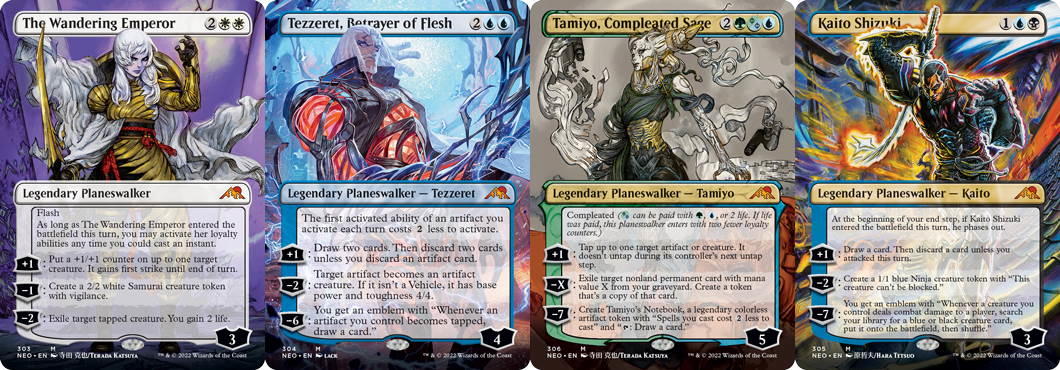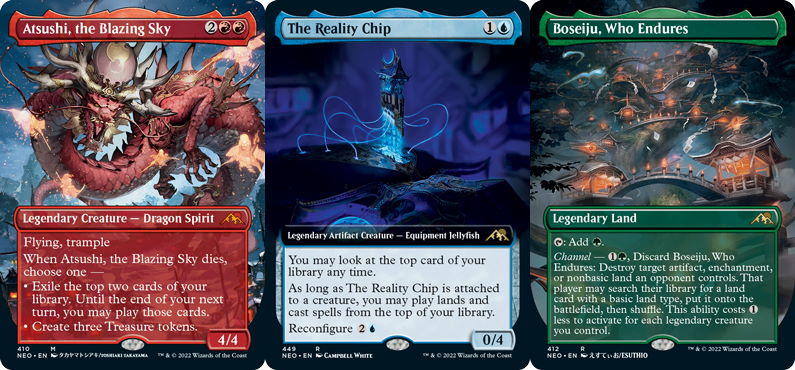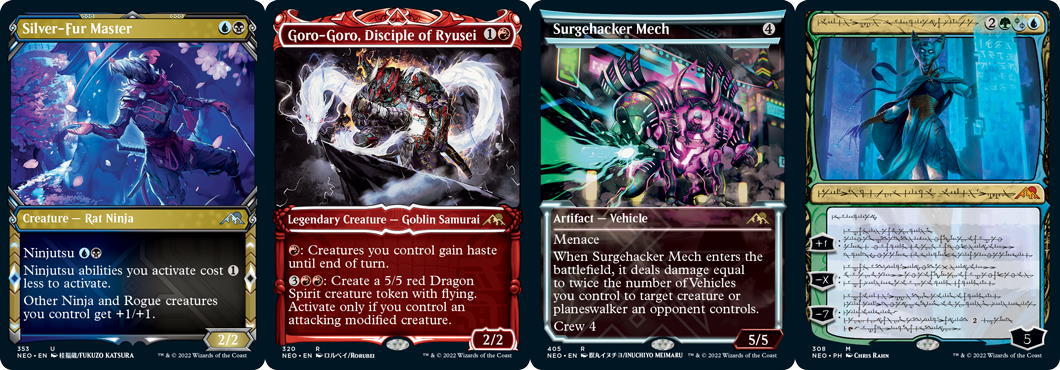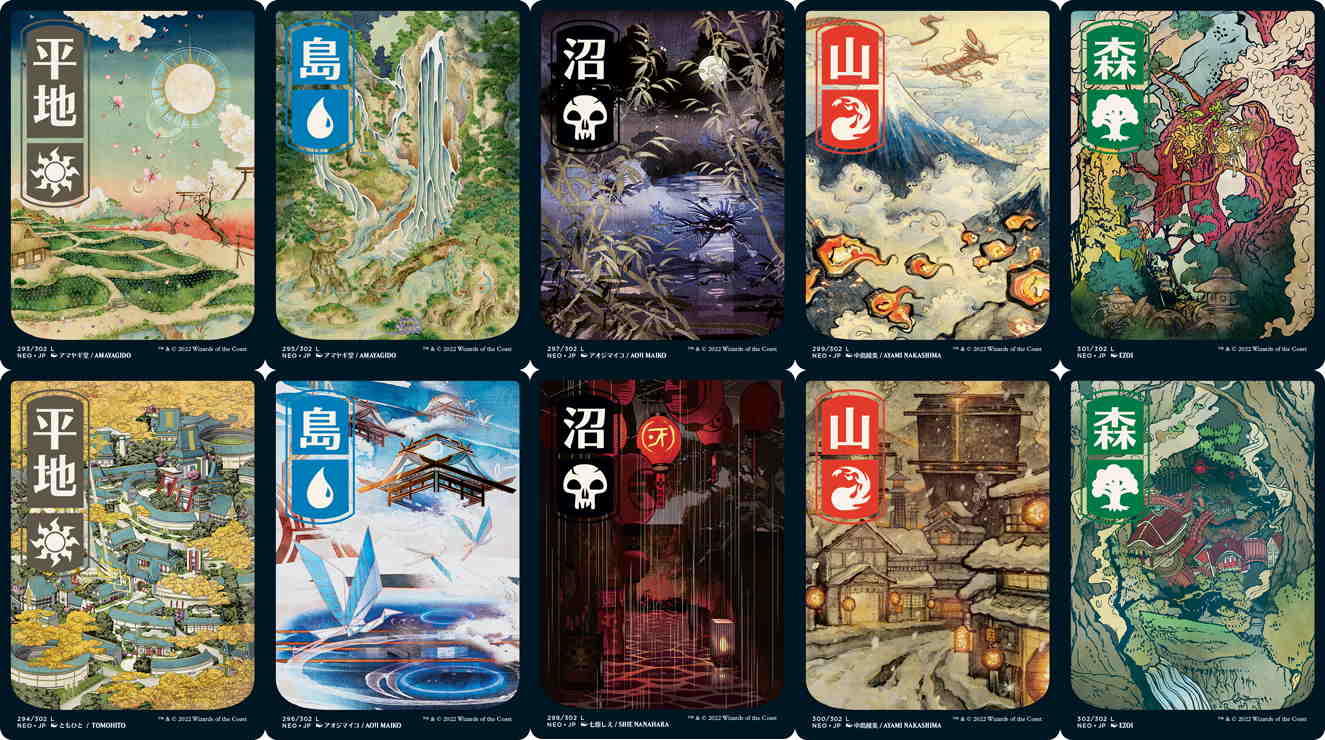Magic: The Gathering's Kamigawa: Neon Dynasty Expansion Pushes the Game Into the Cyberpunk Genre
Magic: The Gathering returns to a fan-favorite plane in the Kamigawa: Neon Destiny expansion. Yet, players will find Kamigawa changed from the world inspired by Japanese folklore and fairytales they first discovered in 2004-2005's original Kamigawa Block. The Kami, Ninjas, Samurai, and other creatures and motifs are still present. However, they're now vying for influence with the cyberpunk-like technological advancements created by the Saiba Futurists. The tension between tradition and modernity is central to Kamigawa: Neon Dynasty's story and gameplay mechanics. In a press pre-briefing, Wizards of the Coasts staff members offered a breakdown of what fans should expect from this distinctive new Magic: The Gathering expansion set.
Kamigawa: Neon Dynasty's story occurs concurrently with the ongoing Magic: The Gathering meta-narrative. That sets its 1200 years after the Kami Wars of the original Kamigawa Block.

The story's protagonist is Kaito Shizuki, a cybernetically enhanced ninja. He's also a planeswalker, having had his Spark ignited when he encountered Himoto, Kamigawa's Kami of the Spark, now housed in his tanuki robot. Kaito was friends with Kamigawa's Emperor in their youth, but the Emperor went missing after being attacked by Tezzeret. It turns out the Emperor is a planeswalker herself. She's secretly been traveling the planes as the mysterious Wanderer, introduced without explanation in 2019's War of the Spark set. The Wandering Emperor's return to Kamigawa is timely as the scheming Tezzeret is present on the plane. It also turns out that the Phrexian praetor Jin-Gitaxias is behind Kamigawa's sudden technological advancements, which is likely an ill omen.
Phyrexian touch on Kamigawa: Neon Dynasty also means the return of Phyrexian mana in a limited capacity. There are two Phryexian planeswalkers in the set, a first for Magic: The Gathering. One of those planeswalkers remains a mystery for now. Wizards of the Coast revealed that the other is Tamiyo, Completed Sage, showing the Kamigawa-native planeswalker after enduring some Phyrexian modifications. (Kaito, The Wanderer, and Tezzeret also have planeswalker cards in the set, but they are not Phyrexian.)
The concepts of modernity and tradition inform various mechanics in Kamigawa: Neon Dynasty, mainly through artifacts and enchantments, respectively. Neon Dynasty introduces the Reconfigure mechanic for artifacts, allowing artifact creatures to become Equipment. The Enchantment side of the equation uses the familiar Saga cards, offering double-side modal sagas that transform into creatures once complete, literally bringing history to life.

Spanning both types is the idea of modifications borrowed from cyberpunk. Equipment, Auras, and counters are all considered modifications. Any creature a player controls with a modification attached is a "modified creature" (think cyborg). Having modified creatures can be vital to using particular card abilities.
There are also some returning elements from the original Kamigawa sets. Ninjas are back as a creature type with their signature keyword, Ninjutsu, representing their ' stealth skills. The ability allows players to pay a cost to return the attacking Ninja to their hand and then immediately back onto the battlefield still attacking.

Also returning is the Channel mechanic. A simple but powerful effect, Channel abilities on a card trigger by a player discarding that card instead of playing it.
Legends, a central theme in the original Kamigawa block, are also plentiful in Kamigawa: Neon Dynasty. The Dragon Spirits are represented in a new cycle of cards. There's a new cycle of Shrine cards and plenty of Kamigawa callbacks.
Ninja and Samurai get significant pushes in the set. As mentioned, Ninjas have the returning Ninjutsu mechanic, but Samurai won't be returning to the less popular Bushido mechanic. Instead, they'll make use of the Exalted mechanic previously seen on many Warrior cards, which adds a +1/+1 counter to an Exalted creature every time it attacks alone.
Doubling down on the Ninja and Samurai theme, each gets a unique showcase border treatment. Every Rare and Mythic Rare in the set also has a "soft glow" treatment, further embracing the cyberpunk themes. Leaning more into tradition, Kamigawa: Neon Dynasty includes 10 ukiyo-e art basic land cards inspired by traditional Japanese woodblock art, two for each land type. There are also borderless variants for planeswalkers, Dragons, the set's legendary land cards, and extended art variants for Rares and Mythic Rares. Those Phyrexian planeswalkers also get Phyrexian language variants. All text on the cards appears in the mysterious script that only Phyrexians (and the Wizards staff members who created it) can understand.

Of course, there are also foil cards, but they're also getting special treatment. In addition to Standard foils, foil-etched variants give some extra definition to showcase frames. Additionally, one card in the set -- Hidetsugu, Devouring Chaos -- gets a neon ink foil variant, applying neon colors to the etched variant for a unique look.
Kamigawa: Neon Dynasty comes to Magic: The Gathering Arena on February 10th, bringing digital versions of all the showcase features that fit the format, new player avatars for the Wanderer and Kaito, a new Kamigawa battlefield, and two new pets. Physical pre-releases begin on February 11th, and the set releases in full in stores on February 18th.




